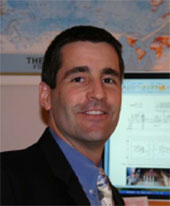
Inside This Issue1 – TC203 Chairman Message NEWS ON RECENT CONFERENCES OTHERS |
Editorial BoardRoger Frank Download ISSMGE Bulletin – Volume 8 Issue 1 February 2014 |
MESSAGE FROM TC203 VICE CHAIRMAN
Prof. R.W.Boulanger
Ross W. Boulanger
Professor and Director of the Center for Geotechnical Modeling
University of California at Davis, California, USA
 Professor Towhata (Editorial Board) asked me, as the incoming chair of TC203 on Earthquake Geotechnical Engineering and Associated Problems, to provide some reflections on a focused aspect of geotechnical earthquake engineering. I picked the present topic, out of all the exciting developments in our field, because I believe the emergence of shared-use facilities represents an important benefit to our international community. I would also like to acknowledge Dr. Dan Wilson, Associate Director of our Center for Geotechnical Modeling (CGM), for his assistance in putting this note together.
Professor Towhata (Editorial Board) asked me, as the incoming chair of TC203 on Earthquake Geotechnical Engineering and Associated Problems, to provide some reflections on a focused aspect of geotechnical earthquake engineering. I picked the present topic, out of all the exciting developments in our field, because I believe the emergence of shared-use facilities represents an important benefit to our international community. I would also like to acknowledge Dr. Dan Wilson, Associate Director of our Center for Geotechnical Modeling (CGM), for his assistance in putting this note together.
Advances in large-scale geotechnical dynamic experimental facilities have played a major role in the advancement of geotechnical earthquake engineering over the past twenty five years. Experimental facilities have become more technologically advanced, experimental techniques have improved, inverse analysis methods for data processing have become routine, numerical modeling has improved, and the spirit of data and facility sharing has transformed the way the community does research. This note reflects on these developments in dynamic centrifuge modeling and their importance to our international community, using examples from the CGM at the University of California at Davis, which operates and maintains two dynamic centrifuges (1-m and 9-m radii) as part of the George E. Brown Jr. Network for Earthquake Engineering Simulation (NEES).
Download ISSMGE Bulletin – Volume 8 Issue 1 February 2014
![]() PDF format
PDF format




































